Pintak Family Genealogy
Like so many American families, the Pintak clan is a rich mix of ethnicities, religions and cultures.
In Asia, Indira Pintak's ancient bloodlines flow from the palaces of the Javanese and Balinese royal families, through the pivotal figures who shaped the three great religions of Indonesia -- Buddhism, Hinduism, and Islam -- back to the mists of pre-history in South Asia.
In continental Europe, direct lines from the modern day Pintak clan extend to Medieval Germany, Spain, Portugal, Italy, Belgium, the Netherlands, and France. Lords, ladies, kings, queens, knights, and conquistadores mix with tradesmen, farmers, and soldiers.
The German branch includes a line that descends from Charlemagne, the first Holy Roman Emperor, a 43rd great-grandfather of the current Pintak generation, and his sixth century ancestor, Saint Arnoul, the Bishop of Metz.
A Spanish branch includes the last kings of the Visigoths and the first Count of Portugal.
The Dutch branch includes a 15th century Herald and King-at-Arms to two Holy Roman Emperors. That same branch features some of the first settlers in America, including Pilgrims, and many of their descendants who fought in the American Revolution.
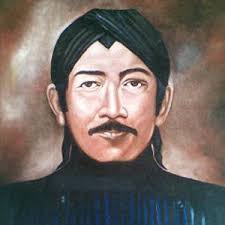
Javanese Royal Lineage
Thanks to Indira Pintak’s Javanese royal blood, our children can trace their ancestry back through the kings and queens of Java and Bali to Emperor Pusyamitra Sunga, who ruled what is now northern India beginning in 185 B.C.
Their family tree includes some of the most renowned figures of Indonesian history: Senopati (-1601), founder of the Mataram dynasty; Sultan Agung (1593-1645), under whom Mataram reached its peak of power; Brawijaya and the rulers of the Majapahit empire (1292-1527); Airlangga (990-1049), the hero-king of the Hindu-Buddhist kingdom of Kahuripa; and Udayana, the 10th century ruler of Bali and one of its earliest historical figures.
Our children are part of all three historic Javanese royal families through separate lines via both their maternal grandparents, most closely tied to Pura Mangkunegaran, created in a succession war that divided the Mataram Empire into three royal palaces in the mid-18th century.
They are sixth generation descendants of both Mankungegara IV (1811-1881) and Mangkunegara III (1803-1853); seventh generation grandchildren of his father-in-law, Mangkunegara II (1796-1835); and ultimately direct descendants of the founder of the dynasty, Mangkunegara I (1725-1795), their eighth great-grandfather, known as the “Soul Catcher” for his prowess on the battlefield.
Our children's bloodline also flows through another of Solo's royal houses, the Keraton Suryakarta. Their eighth great-grandfather was Pakubuowono III (1732-1788) and the line of great-grandfathers continues back to Pakubuowono II (1711-1749), Amanangkurat IV (1680-1726), and Pakubuowono I (1648-1719).
And through their maternal grandfather the Pintak children are descendants of Diponegoro, hero of the struggle against Dutch colonialism, and his father, Sultan Hamengkubowono III of the third of Java's royal houses, Keraton Yogyakarta Hadiningrat.
They are eligible to carry the royal titles Raden Roro (R.R.) for the girls, Annya and Shantara, and Raden (R.) for our son, Justin.
Javanese mysticism weaves a complex path through their lineage, beginning with the Kediri kings, who were descendants of Airlangga. One of those kings, Jayabaya, is famous for his prophecies, contained in the 12th Century Jayabaya Term, one of which seemed to predict Dutch colonial rule and the Japanese occupation during World War Two: "The Javanese would be ruled by whites for 3 centuries and by yellow dwarfs for the life span of a maize plant." Another, echoing an 8th Century Tibetan prophecy, saw the return of the "just king" Ratu Adil at a time “when iron wagons drive without horses and ships sail through the sky.”
More recently, according to Java's indigenous Kejawan mystic tradition, the 17th Century founder of the Mataram dynasty, Senopati, forged an otherworldly connection with Kanjeng Ratu or Nyi Roro Kidul, the Queen of the Southern Sea. She would become the spiritual consort of Mataram sultans to the present day and protector goddess of the lineage.
The family tree encompasses all the main religious strains of Indonesia. It includes Sri Kertanegara Widkrazma Dharmatunggadewa (died 1292) of the Singhasari dynasty, the last Javanese ruler who was a champion of Vajrayana Buddhism, now most closely identified with Tibet, and who was later venerated as an emanation of Mahakasyapa, one of the principal disciples of Shakyamuni Buddha.
With the marriage of Indira's 41st great-grandmother, Pramodawardhani bint Samaratungga of the Sailendran Buddhist dynasty, to Maharaja Medang IX Rakai Pikatan of the Hindu Sanjaya dynasty, the two great pre-Islamic Javanese religious traditions allied. Pramodawardhani is said to have been a driving force in building Borobudur, the greatest Buddhist stupa in the world, and it is said her likeness was used for the image of the goddess Durga on the great Hindu temple at Prambanan. Through her dynasty, the Pintak children are also distantly connected to the 10th century Sumatran Buddhist teacher Dharmakirti (Serlingpa), a member of the same royal family, whose most famous student was Atisha, one of Tibetan Buddhism's greatest spiritual masters. History also records that the Sailendran ancestors built the temple to Tara at Kalasan, where Atisha is said to have had a vision of Tara, and had close ties with India's ancient Nalanda University, about which His Holiness the Dalai Lama once said, "The source of all the [Buddhist] knowledge we have, has come from Nalanda."
After a divergence lasting centuries, Hinduism and Buddhism again came together with the 12th century marriage of Hindu-Shiva King Ken Arok and his Mahayana Buddhist queen, Ken Dedes, both direct ancestors, to form the Rajasa dynastic line, which would include Raden Wijaya (died 1309), founder of the great Majapahit Hindu empire and a 26th great-grandfather.
The Pintak ancestral trail also connects to Islam and the Wali Songo, the seven Sufi saints credited with bringing that religion to Indonesia, through Ki Ageng Sela, an ancestor of the Mataram royal family, student of the Wali Songo Sunan Kalijaga, and himself a noted 15th century Muslim figure and author of the Pepali, a guide to religious life.
And throughout the family history, Kejawan, Java's syncretic religious tradition, named for 14th century ancestor Bondan Kejawan, has been a powerful sub-text.
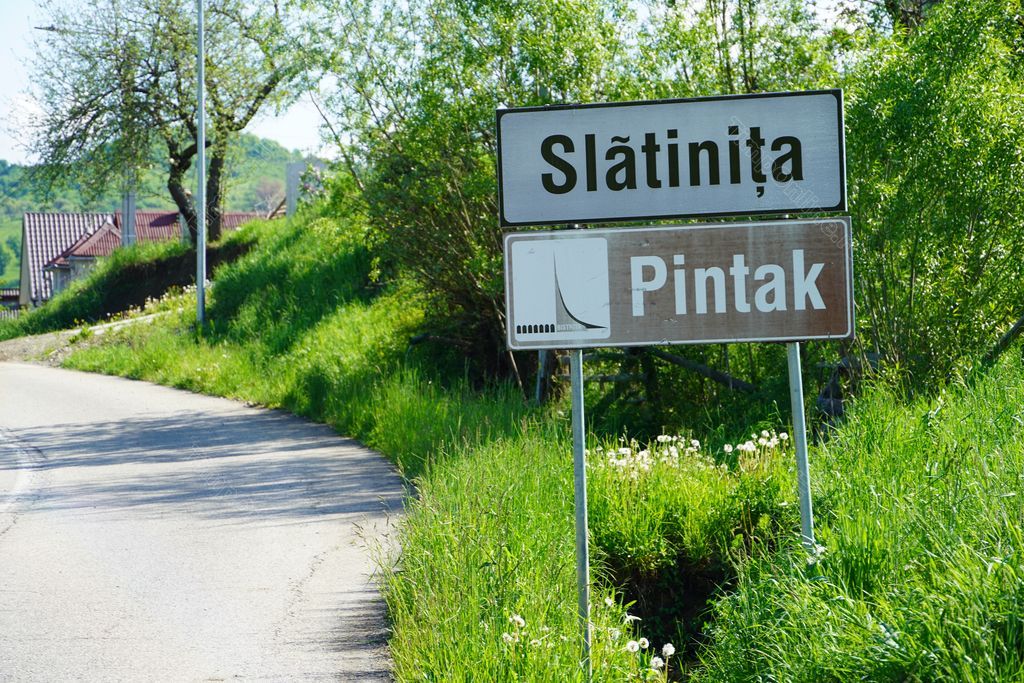
Austro-Hungarian Empire
The surname Pintak can be traced to a village of that name – known in Romanian as Slatinita – in what is now Transylvania in Romania. According to various histories, fortified towns in that region were named for Saxon knights brought to the region in the 12th century to protect the upper reaches of the Hungarian empire. The area was decimated by the Tartar invasion in the 13th century and the Black Death that followed. There is saying in the region that refers to the grim task of supplying one plague-stricken town that was sealed off: "One travels from Pintak through the iron gate and Hell to Mettersdorf."
Lawrence Pintak's paternal great-grandfather Joseph Pintak (1866-1948) arrived in the U.S. in 1884 from the town of Stará Ľubovňa in what is now Slovakia, about 300 miles from the village of Pintak. Back then it was all part of the Austro-Hungarian Empire. His wife, Rosalie Maldonyi was baptized in a church in that same town in 1864. Her parents were Franciscus Maldonyi and Anna Zsigarlovits. Their line can be traced back another four generations to Josephus Druzsbaczk and his wife Elizabetha Maczko, who lived in the same region in the late 1700s.
For now, that is where Lawrence's paternal grandfather's branch ends.
The Irish/Dutch Line
Lawrence's mother, Lorraine Pintak nee Burke (1927-1997), was always very conscious of her Irish heritage. Her paternal grandfather fled the Irish potato famine in the 1800s, as did her mother’s father. According to Lorraine's father, Edward Burke (1905-1976), his parents came from Drogheda, in what is now the Republic of Ireland. But there the trail ends. The same is true of Lawrence's mother’s grandmother’s Irish line, which can be traced no further back than 1840 in County Cork. There is no shortage of Burkes in the Irish registries.
But Lorraine's maternal grandfather, Charles Banta (1867-1925), was Dutch, and his mother's lineage is rich and long.
Pre-eminent among the Dutch ancestors of the Banta line is Henrick Jan van Heessel (circa 1415-circa 1475), Herald and King-at-Arms to Holy Roman Emperors Sigismund and Frederick III. His role included certifying the lineage of aristocratic families and approving their coats-of-arms, and his portraits of 15th century aristocrats still hang in museums and private collections today.
One of earliest identified ancestors in that branch is Doytze van Albada, a Dutch nobleman born about 1180. His family crest is among many that fill the family tree, indicating their noble position.
Lolle Lollesz Ockingha (Gerritsma), born in about 1280 in Friesland in what is now the Netherlands, and his wife Bauck, are the progenitors of a long line that played a significant role in politics and society on both sides of the Atlantic (see below).
Other early Dutch ancestors include Jancko Van Fockema and his wife Beyck, born in the early 1300s, Anna Maria Dantzer, born in Drenthe in what is now the Netherlands in 1435; Heike Tjarks, born in Pays-Bas in the late 1400s; and Simon Bertolf Von Belven and his wife Engel Angela von dem Driesch, born in the 1470s, whose son and grandson would both become judges.
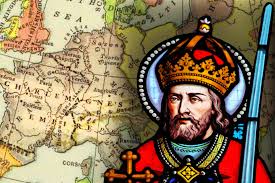
The German Branch
Lawrence's paternal grandfather, Franz Joseph Pintak, Sr. (1893-1943) died when his father Lawrence A. Pintak (1927-1990) was young and his paternal grandmother, Margaret nee Lotterman (1903-1989), always bragged that they were of “good German stock.” The family tree through her parents bears that out, weaving among an array of counts and courtiers back to Pepin, King of Italy (777-810), and his father, the Emperor Charlemagne (748-814), then on to his sixth century ancestor, the Bishop of Meta, Saint Arnoul (582-640).
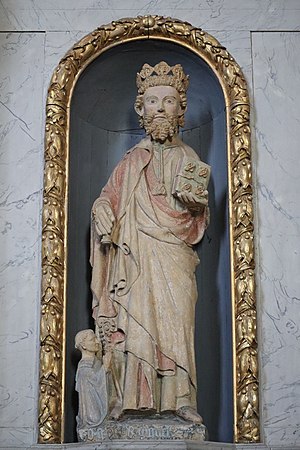
The French Connection
French ancestors reach back to sixth century Brittany, and include kings and counts such as Saint Judicael, King of Domnonée (c. 590-647) and Mathuédoï I (875-925) who renounced his claim to Brittany and fled to Britain to escape the Viking invasion of his realm.
Others in the French line include Reinauld de Hervilly, born in Avesnes, France in 1320 and his wife Jeanne de Fromentel, born in 1310, Edward Herbeq and Guillaume Nicolas LeSueur de Beaugy, both born in 1500; and Elizabeth Dickonson, born in Calais in 1525, who later emigrated to England where she died in 1549; and Anne Le Conte De Monstreul Trenel (1533-1569).
Notably, the Huguenot Francois LeSeur D'Lozier (1625-1671), who arrived in New Amsterdam in 1657, was one of the founders of what is now Harlem, originally established as a French-speaking enclave in the Dutch colony.
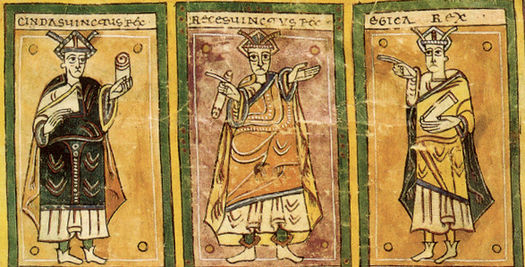
Portugal and Spain
The Spanish line reaches back to the last Visigoth kings, Flavius Aegica (610-702), Vitizia (d. 710) and Sisebuto de Coimbra (682-734), who ruled from the ancient fortress city of Toledo, which towers above the Castilla-La Mancha plains, and King Ramiro of Asturias (c. 800-850) in northwest Spain. It includes King Pelagius of Asturias (685-737) who spearheaded the Reconquista that drove the Moors from the Iberian Peninsula and established a dynasty that became the forerunner for the modern Spanish and Portuguese royal families. The line includes his grandson, Fruela I (c. 722-768), known as "the Cruel" for murdering his brother, and Alfonso I (c. 693-757), "The Catholic" king who reconquered Galicia and Leon from the Muslims of al-Andalus in the name of the Church.
The Portuguese play a significant role in the family tree, including Vimara Peres (820-873), who was named the first Count of Portugal by King Alfonso III of Spain after he led the armies that expelled the Moors from the region on behalf.
Another line descends from an important Jewish Portuguese noble family that stretches back to the 10th century through Vascos Martins da Cunha (b. 1352) whose sons were granted huge lands in Spain for supporting Enrique III of Castile during the Portuguese civil wars. Another traces to Ferman Gutierrez de Vega (d. 1435), the first lord of Grajal, and his wife and his wife María Rodríguez de Escobar, who built what has been called "one of the most singular palaces of the Spanish Renaissance."
Other significant Spanish ancestors include Count Pedro Froilaz de Traba (d. 1128), said to be one of the most important figures of the medieval period in Galicia; Pedro Fróilaz de Traba (1086–1126), the most powerful figure in Galacia in his era, who was described as "spirited ... warlike ... of great power ... a man who feared God and hated iniquity;" and Juan II de Silva y Ribera (1492-1566), the Marquis of Montemayor, military commander of the Alcazar fortress in Toledo, who is believed to have been the model for El Greco's portrait, "The Nobleman with his Hand on his Chest."
The Spanish and Dutch family trees intersected when Sebastian De Cortes (1550-1615) and his wife Joanna Maria Del Castillo Carrion (1558-1615) moved to the village of Kortryk in Flanders and, for convenience, took the name “van Kortryk." They would become part of the convergence of ancestral lines in the U.S. when their grandson Jan Bastian Van Kortryk (1618-1677) emigrated to the New World in 1663 aboard the Brindle Cow, arriving on April 16, 1663 with his wife Jolant de La Montagne (1627-1677) and their four children, along with his brother Michael and his family.
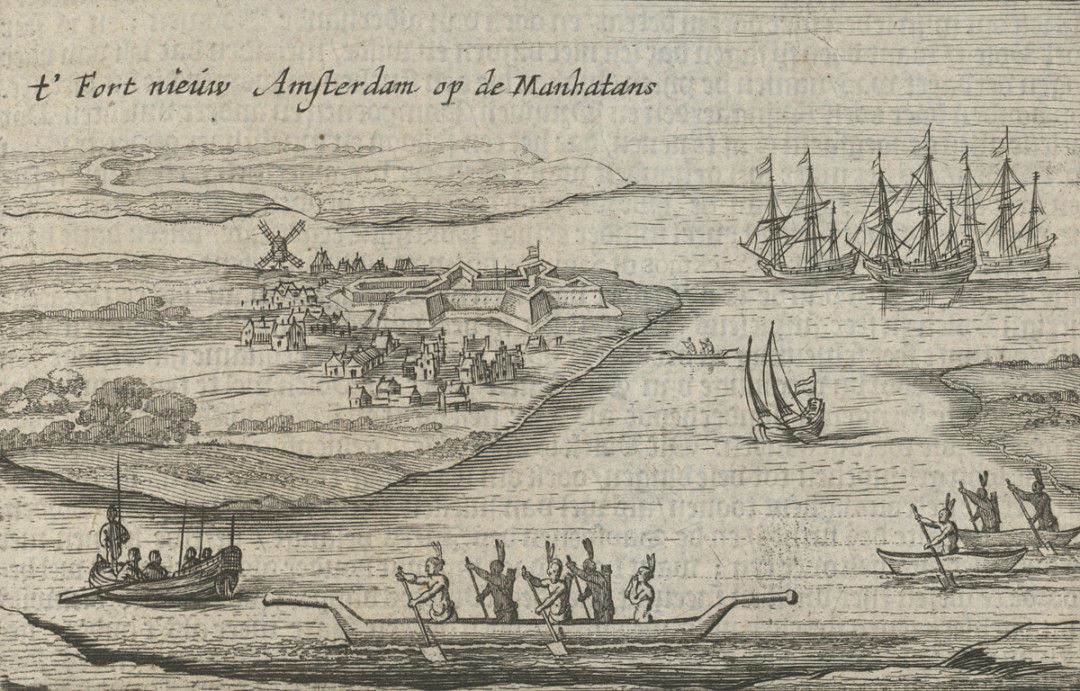
The New World
Pintak ancestors were among the first few dozen Dutch settlers to arrive in New Amsterdam, which would later become New York. Many others would arrive over the next few decades.
Wolphert Gerretse van Kouwenhoven (1579-1662) and his wife Neeltje Peters Jacobsdochter Janse (1584-1658) emigrated to the New World in 1625 aboard the Orangenboom, the third settler ship to arrive in what would become New Amsterdam. Wolphert was a Pilgrim, like his co-religionists who arrived at Plymouth Rock aboard the Mayflower four years earlier. There were only a few dozen families living in the small fort at the foot of Manhattan island when they landed. Kouwenhoven was one of the first five "head farmers" sent out by the Dutch West Indies Company. His wife became a successful fur trader. Wolphert is recognized as a founder of New Netherlands, the Dutch colony that stretched down the east coast of the American continent. He and a partner were among the first European settlers to purchase land from the Native Americans. It remains one of the oldest existing written land agreements in Anglo-America. The deal involved a large tract of coastal land near what is now the Flatlands, Sheepshead Bay, and Bergen Beach in Brooklyn. Gerritzen Beach in the heart of that area still bears his name and that of his 13th century ancestor mentioned above.
Lambert Huybertson Moll (1595-1679) was a hard-drinking shipbuilder who sailed to the New World in 1657 seeking greater opportunity. He built his home at 63 Wall St., near the shipyards. He was one of the 93 men who signed the Remonstrance, a petition that convinced Gov. Pieter Stuyvesant to surrender New Netherland to the British in 1664. His daughter Marretje Lambertse Moll (1625-1679) married Gerrit Blauvelt (1620-1685), who arrived as an indentured farm manager but a few decades later received a grant of 50 acres of land in what is now the Lower East Side of Manhattan, likely worth a few billion dollars today.
The second wave of immigrant ancestors included French-speaking Calvinist Walloon and Huguenot families seeking greater religious freedom, like David Des Marets (later Demarest), a Huegonaut who arrived in 1663 on the Bontekoe, and would eventually purchase what later became Hackensack in New Jersey. The descendants of many of these ancestors would eventually take up arms against the British in the American Revolutionary War, and the historical documents are full of records of service and pensions for the Daughters of the Revolution who lost their husbands and fathers in the fight.
The Esoteric
In The Lost Years of Christ, Elizabeth Clare Prophet tells the story of a 19th century Russian journalist who claimed that at a Buddhist gompa named Pintak, high in the Himalayas, he was presented with a manuscript that purported to prove that Jesus spent his 17 “missing” years studying with the monks of Tibet.
Ancestry.com
Those with a legitimate interest may email LP at pintak dot com to request access to the large and complex family tree.


